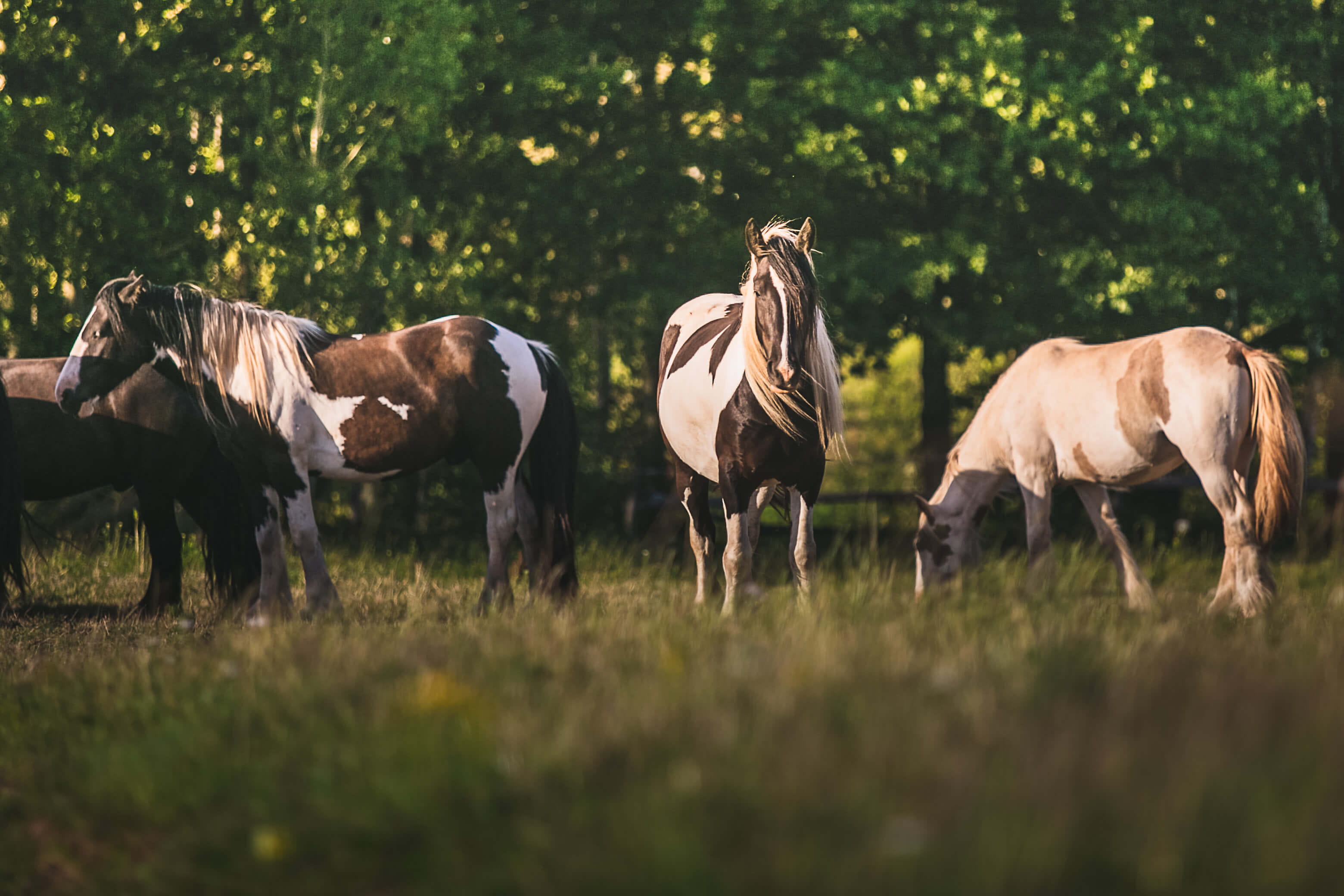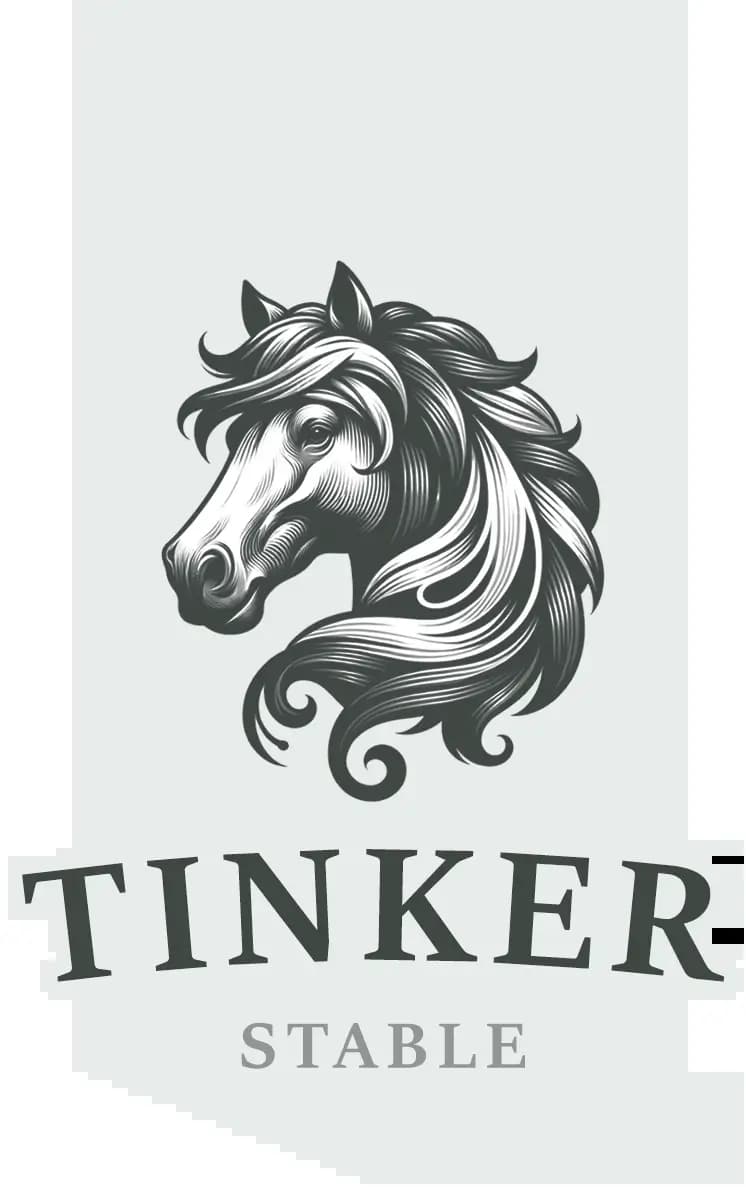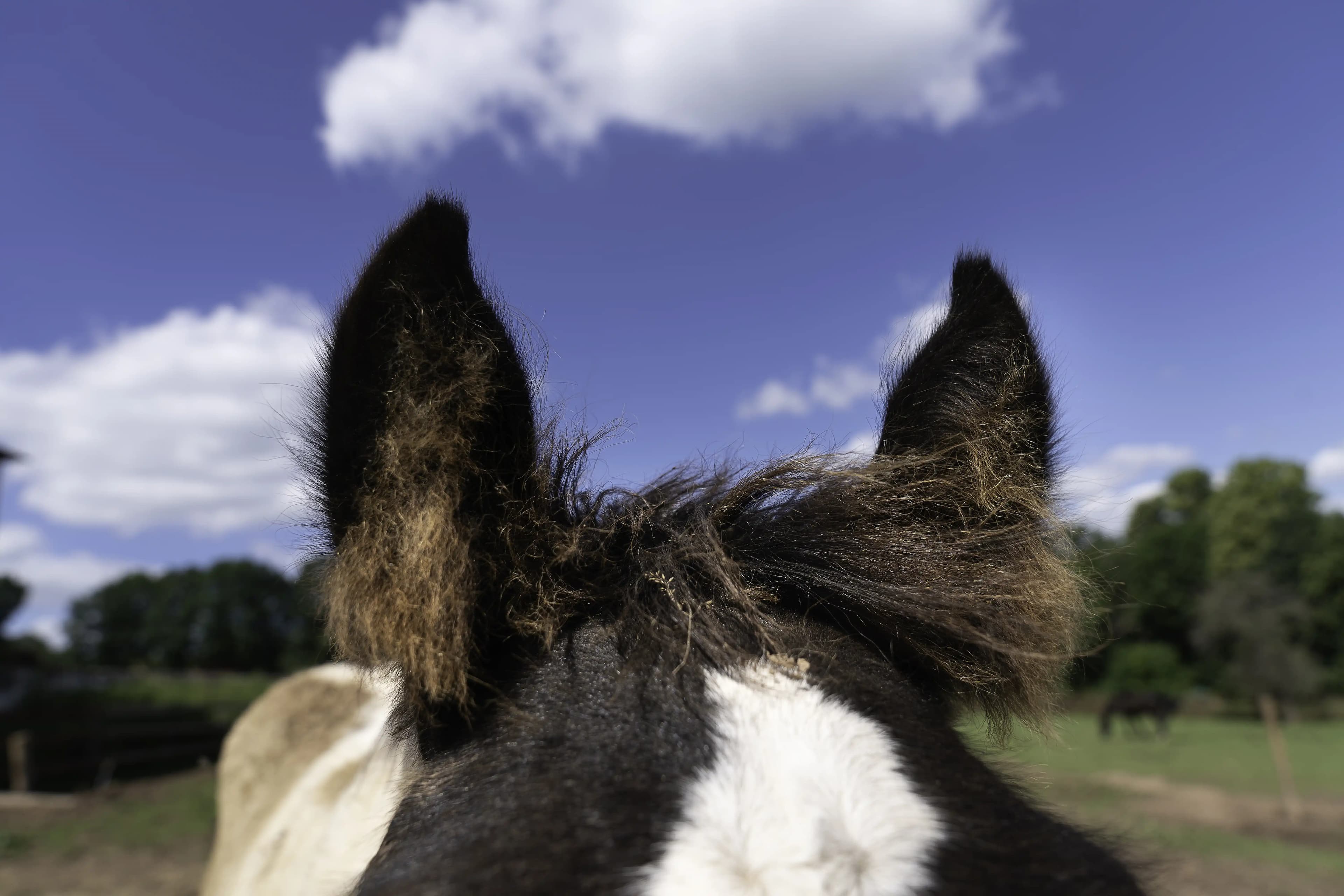The History of Tinker Breed Horses
The History of Tinker Breed Horses

The Tinkers, also known as Irish Cobs or Gypsy Horses, are emblematic of freedom and an indomitable spirit. This unique horse breed, which originated in Ireland and Britain, dates back to the 19th century. Tinkers were indispensable companions to Irish nomads and gypsies, playing a pivotal role in their daily lives and culture.
The adaptability and endurance of Tinkers, along with their ability to thrive with limited fodder, made this breed particularly valuable to nomadic peoples. These horses boast a beautiful appearance, including a lush mane and tail, and a variety of coat colors ranging from solid to piebald, making each individual truly distinctive.
In the latter half of the 20th century, Tinkers began to gain popularity beyond their historical homelands. Their friendly nature, calmness, and trainability made them perfect family horses, partners for novice riders, and even stars of the show arena.
Today, Tinkers hold a special place in the hearts of horse enthusiasts worldwide. They excel in various riding disciplines, are used in therapeutic settings, and continue to be reliable companions on journeys and adventures.
Discover the world of Tinkers – a unique horse breed whose origins and temperament inspire and foster a respect for nature.
Types of Tinkers
Types of Tinkers

Tinkers, a breed with a rich historical heritage, are celebrated for their variety and uniqueness. This is particularly evident in the three primary types: Grai, Cob, and Vanner. Each of these types exhibits its own unique physical characteristics and temperament traits, making Tinkers a favorite among horse enthusiasts around the globe.
Grai
The Grai type is the second most popular among Tinkers, surpassing its peers—the Cob and Vanner—in refinement and agility. These horses are perfectly suited for sporting disciplines thanks to their calmness, elegance, and self-confidence.
- They stand 135 to 156 cm tall at the withers, though there are exceptions.
- They often have solid or piebald (tobiano) coloring, with other colors also accepted.
- Their heads are graceful and small, with the Roman nose profile being rare.
- Their eyes are large and expressive, potentially blue or half-blue.
- Their ears are small to medium-sized, well-set, and directed forward.
- Their necks are high-set, well-muscled, with undesired muscle build-up in the lower part.
- Their hind limbs should be well-formed and correctly set, matching the overall grace of the Grai type.
Cob
The Cob is the most common type among Tinkers, characterized by a strong build and a calm demeanor. Since 2020, Cob types have been divided into two categories—light and heavy—to better adapt them to various conditions of upkeep and use.
- They range from 135 to 156 cm in height.
- The color is predominantly piebald (tobiano) or solid.
- Their heads are small or medium-sized with a broad forehead.
- Their eyes are expressive, with blue and half-blue allowed.
- Their necks can be short or normal length, with a well-rounded crest highly valued.
- Their hind limbs are well-developed, correctly positioned, and sufficiently muscular.
Vanner
The Vanner is the least common but most powerful type among Tinkers, distinguished by a heavy build and confidence. These horses outmatch their counterparts in strength and size.
- They stand about 156 to 170 cm tall at the withers, with taller individuals also found.
- The color is often piebald (tobiano), with other variations permitted.
- Their heads are proportional to the body, with a broad forehead and possible Roman nose profile.
- Their necks are strong, not too long, and high-set.
- Their hind limbs are sturdy and correctly positioned, with well-developed joints and sufficient musculature.
Regardless of the type, all Tinkers are renowned for their kind, balanced temperament and excellent rapport with humans. They are easily trainable, loyal, and dependable, making them excellent family horses and partners for riders of all skill levels.
Applications of Tinker Horses
Applications of Tinker Horses
Tinkers, with their unique combination of beauty, calmness, and adaptability, have found extensive use in various spheres of the modern world. These versatile horses serve not only as faithful companions to their owners but also perform a range of vital functions, from sports to therapeutic interaction.
In Riding and Equestrian Sports
Tinkers have proven themselves in various types of equestrian sports, including dressage, show jumping, carriage driving, and trail riding. Their stamina, ability to learn quickly, and friendly nature make them excellent candidates for competitions and recreational riding.
Therapeutic Use
Due to their calm and balanced nature, Tinkers are often used as therapy horses. They contribute to improving the emotional state of people with various illnesses or psychological difficulties, aiding in their socialization and rehabilitation.
Work and Agricultural Activities
Despite the reduced dependence on horse power in agriculture, Tinkers are still used as working horses in some regions. Their endurance and ability to adapt to different conditions make them indispensable helpers in land and livestock care.
Shows and Performances
With their bright appearance and expressive movements, Tinkers captivate the hearts of audiences in circus performances and shows. They demonstrate incredible grace and the ability to perform complex tricks, astonishing the audience with their skills.
Personal Companion and Family Horse
Finally, thanks to their friendly nature and tolerance for children, Tinkers have become popular family horses. They are ideally suited for joint rides, teaching the basics of horse riding, and simply as a source of joy for all family members.
Overall, Tinkers adapt excellently to various conditions and requirements, which only increases their popularity. Their versatility, combined with a distinctive appearance and wonderful character, makes Tinkers desirable partners in many areas of activity.
Care for Tinkers
Care for Tinkers
The health and longevity of Tinkers depend on proper care and maintenance. These majestic horses require special attention to their diet, coat and hoof care, as well as regular veterinary check-ups.
Tinker Nutrition
A balanced diet is key to a Tinker's health. Ensure your horse has quality hay, fresh water, and specialized feeds adapted to its age, weight, and activity level. Adding vitamins and mineral supplements can also help maintain optimal health.
Coat and Hoof Care
Regular grooming not only keeps the coat clean and shiny but also allows for the timely detection of any skin diseases or external parasites. Hoof care, including cleaning and trimming, prevents many problems and contributes to the health of the Tinker's legs.
Veterinary Check-ups
Regular veterinary check-ups are an essential part of caring for Tinkers. A professional veterinarian can not only monitor the overall health condition of the horse but also prevent or treat many diseases in a timely manner. Vaccinations, deworming, and preventive measures against infectious diseases should become a routine part of your Tinker's care regimen. Regular visits from a farrier are also crucial to ensure that hooves are properly cared for and that any potential issues are addressed promptly to maintain the horse's comfort and mobility. By providing comprehensive care and attention, you can ensure that your Tinker remains healthy, happy, and active for many years.
Buying Guide
Buying Guide
Purchasing a Tinker is a significant decision that requires a meticulous approach and attention to detail. These beautiful horses are known for their friendly nature and unique appearance, but several key aspects need to be considered when choosing a Tinker.
Health and Background Check
Before making a purchase, ensure the horse is in good health by requesting a veterinary certificate and the results of recent examinations. It's also important to know the Tinker's origin, pedigree, and maintenance history to avoid potential hereditary health problems.
Assessment of Temperament and Training
Tinkers are valued for their balanced temperament, but each horse is unique. Spend time with the horse to better understand its behavior and level of training. This is particularly crucial if you're looking for a horse for specific activities or for children.
Meeting Your Needs
Assess whether the chosen horse meets your goals and living conditions. Consider the size, age, type of Tinker, and its previous experience to ensure it is suitable for your tasks, whether it be riding, participating in shows, or simply as a companion.
Financial and Legal Aspects
In addition to the initial purchase cost, consider the long-term expenses for maintenance, care, and potential veterinary services. Ensure the legality of the transaction by checking all documents and the legal purity of the purchase.
Choosing a Tinker is not just buying a horse; it's the beginning of a new exciting journey with a unique and magnificent creature. Approach this process with responsibility to ensure a happy future for both you and your new companion.
Links
Links
PSHT — Polish Tinker Breeders Association. Join PSHT — the official representative of NSvT in Poland, and become part of a dynamically developing community of Tinker horse enthusiasts and breeders. Membership in PSHT offers access to exclusive benefits: professional support, reduced prices for horse passports. Our community provides invaluable resources for everyone from beginners to experienced owners, assisting in breeding, care, and promotion of the Tinker breed. Join us to expand your knowledge, broaden your contacts in the equestrian industry, and contribute to the prosperity of this unique breed.
NSvT — Nederlands Studbook voor Tinkers serves as the official studbook in the Netherlands for the Tinker or Irish Cob horse breed. This organization plays a key role in preserving and promoting the breed's characteristics, health, and welfare of Tinkers. NSvT offers registration and certification for Tinker horses, supports breeders with necessary information and recommendations, organizes events such as evaluations and shows, and provides members with educational resources and networking opportunities.

